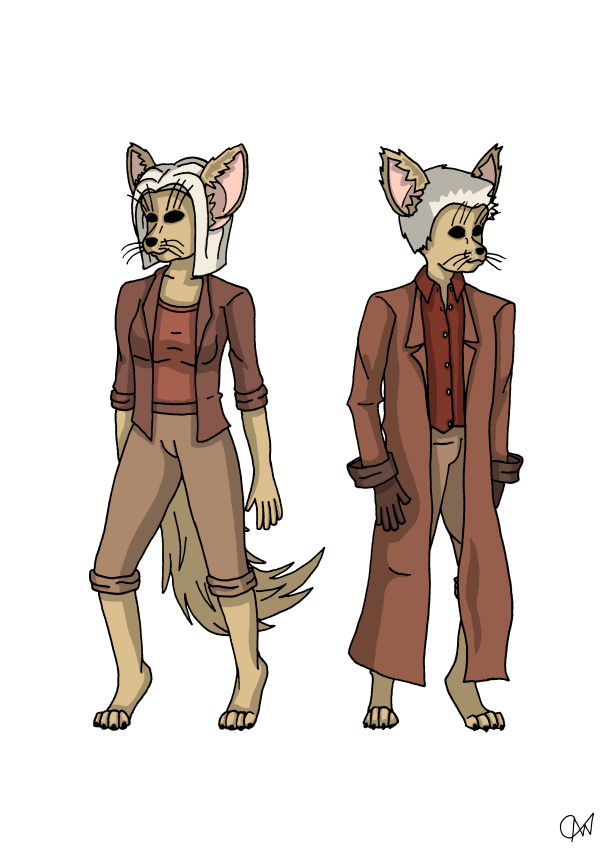Georgina, George to her friends, is the Pratarian engineer and mechanic of the transport ship Haphazard. Although she is the youngest member of the crew, she is the most level-headed and dependable person on the ship.
Having grown up on a freighter, life aboard the Haphazard is just like the old days. Her parents ran a trade and transport company, and the company flagship, the Vesta, was also the family home. Being home schooled meant George had a colourful and varied education as she learnt a lot about life in the galaxy from the temps and occasional spacers that dropped by for work or trade. Taking an active role in the family business from a young age, she took over running the maintenance of the ship when she was eight. The old man that maintained the ship was killed during a pirate raid near the end of the Akiran War, though not before imparting as much of his knowledge as possible on a certain young and impressionable girl. Over the years she continued to improve, and you’d be hard-pressed to find a better engineer in the galaxy, even in the highly trained and polished ranks of the Space Corps.
The war started when George was a mere kitten, and she was called on to help the family whenever possible due to the constant threat of attack by Akiran ships or pirates. They survived many raids and were paid well for managing to transport supplies through enemy lines to the outlying colonies that were under siege. Once the war ended, business continued to be profitable, that was until a particularly messy pirate raid. The pirates managed to severely damage the Vesta and caused an antimatter breach resulting in a full-evacuation of the ship. Most of the crew, including George, made it to the escape pods and found harbour on the other ships in the fleet; however her parents were killed while trying to make sure everyone else made it to safety.
Alone and not knowing any other life, George signed on with Tezic Odriro to work the recently vacated engineering position aboard his transport ship the Haphazard. She hasn't looked back since.
Spending most of her time in the engine room, George never feels more at ease than when she’s tweaking or repairing something. Sometimes, when particularly stressed, she deliberately breaks some non-vital component just so she can spend time repairing it. Unlike the rest of the crew, George doesn't have an assigned room; she chooses to live in the engine room and has a hammock hung there so she can fall asleep to the soothing hum of the engines. She’s rarely found without her favourite multi-purpose tool Tweakie, and a rather strange and pointy rod that only she knows what it’s for.


































